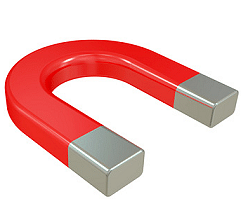UPSC Exam > UPSC Tests > Science & Technology for UPSC CSE > Test: Fun With Magnets - UPSC MCQ
Test: Fun With Magnets - UPSC MCQ
Test Description
10 Questions MCQ Test Science & Technology for UPSC CSE - Test: Fun With Magnets
Test: Fun With Magnets for UPSC 2024 is part of Science & Technology for UPSC CSE preparation. The Test: Fun With Magnets questions and answers have been
prepared according to the UPSC exam syllabus.The Test: Fun With Magnets MCQs are made for UPSC 2024 Exam. Find important
definitions, questions, notes, meanings, examples, exercises, MCQs and online tests for Test: Fun With Magnets below.
Solutions of Test: Fun With Magnets questions in English are available as part of our Science & Technology for UPSC CSE for UPSC & Test: Fun With Magnets solutions in
Hindi for Science & Technology for UPSC CSE course. Download more important topics, notes, lectures and mock
test series for UPSC Exam by signing up for free. Attempt Test: Fun With Magnets | 10 questions in 10 minutes | Mock test for UPSC preparation | Free important questions MCQ to study Science & Technology for UPSC CSE for UPSC Exam | Download free PDF with solutions
Test: Fun With Magnets - Question 1
The property of attracting iron or other magnetic materials is called
Detailed Solution for Test: Fun With Magnets - Question 1
Detailed Solution for Test: Fun With Magnets - Question 2
| 1 Crore+ students have signed up on EduRev. Have you? Download the App |
Detailed Solution for Test: Fun With Magnets - Question 3
Detailed Solution for Test: Fun With Magnets - Question 4
Test: Fun With Magnets - Question 5
State whether the following statement is True or False
Magnets can attract pieces of iron.
Detailed Solution for Test: Fun With Magnets - Question 5
Test: Fun With Magnets - Question 6
How can you identify the north pole of a magnet if it is not marked?
Detailed Solution for Test: Fun With Magnets - Question 6
Detailed Solution for Test: Fun With Magnets - Question 7
Test: Fun With Magnets - Question 8
What is a common characteristic of materials that are attracted to magnets?
Detailed Solution for Test: Fun With Magnets - Question 8
Test: Fun With Magnets - Question 9
What happens to iron filings when a bar magnet is moved across them?
Detailed Solution for Test: Fun With Magnets - Question 9
Test: Fun With Magnets - Question 10
Artificial magnets are made in different shapes such as __________, __________, and ____________.
Detailed Solution for Test: Fun With Magnets - Question 10
|
146 videos|358 docs|249 tests
|
Information about Test: Fun With Magnets Page
In this test you can find the Exam questions for Test: Fun With Magnets solved & explained in the simplest way possible.
Besides giving Questions and answers for Test: Fun With Magnets, EduRev gives you an ample number of Online tests for practice
|
146 videos|358 docs|249 tests
|
Download as PDF


















